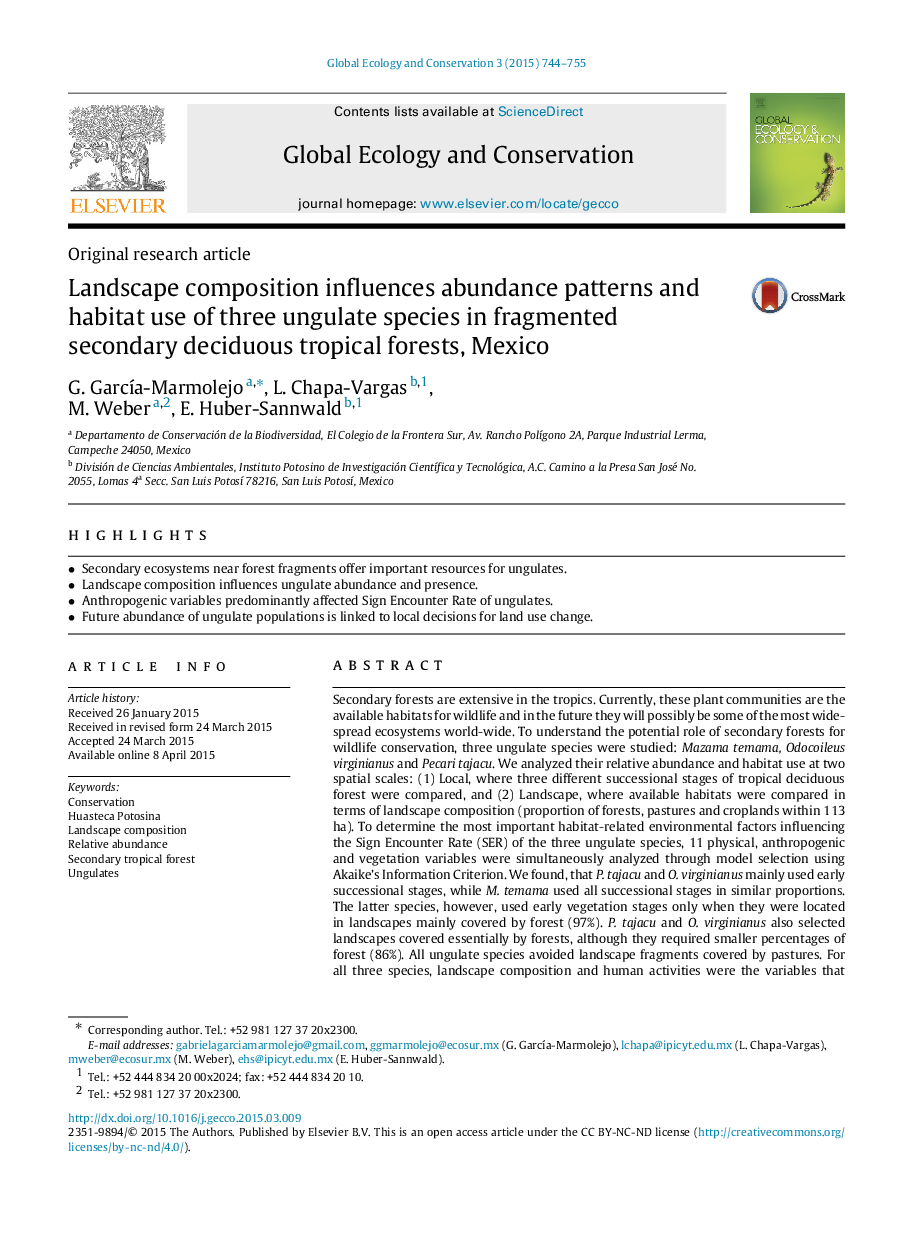| کد مقاله | کد نشریه | سال انتشار | مقاله انگلیسی | نسخه تمام متن |
|---|---|---|---|---|
| 4379601 | 1617664 | 2015 | 12 صفحه PDF | دانلود رایگان |
• Secondary ecosystems near forest fragments offer important resources for ungulates.
• Landscape composition influences ungulate abundance and presence.
• Anthropogenic variables predominantly affected Sign Encounter Rate of ungulates.
• Future abundance of ungulate populations is linked to local decisions for land use change.
Secondary forests are extensive in the tropics. Currently, these plant communities are the available habitats for wildlife and in the future they will possibly be some of the most wide-spread ecosystems world-wide. To understand the potential role of secondary forests for wildlife conservation, three ungulate species were studied: Mazama temama, Odocoileus virginianus and Pecari tajacu. We analyzed their relative abundance and habitat use at two spatial scales: (1) Local, where three different successional stages of tropical deciduous forest were compared, and (2) Landscape, where available habitats were compared in terms of landscape composition (proportion of forests, pastures and croplands within 113 ha). To determine the most important habitat-related environmental factors influencing the Sign Encounter Rate (SER) of the three ungulate species, 11 physical, anthropogenic and vegetation variables were simultaneously analyzed through model selection using Akaike’s Information Criterion. We found, that P. tajacu and O. virginianus mainly used early successional stages, while M. temama used all successional stages in similar proportions. The latter species, however, used early vegetation stages only when they were located in landscapes mainly covered by forest (97%). P. tajacu and O. virginianus also selected landscapes covered essentially by forests, although they required smaller percentages of forest (86%). All ungulate species avoided landscape fragments covered by pastures. For all three species, landscape composition and human activities were the variables that best explained SER. We concluded that landscape is the fundamental scale for ungulate management, and that secondary forests are potentially important landscape elements for ungulate conservation.
Journal: Global Ecology and Conservation - Volume 3, January 2015, Pages 744–755
